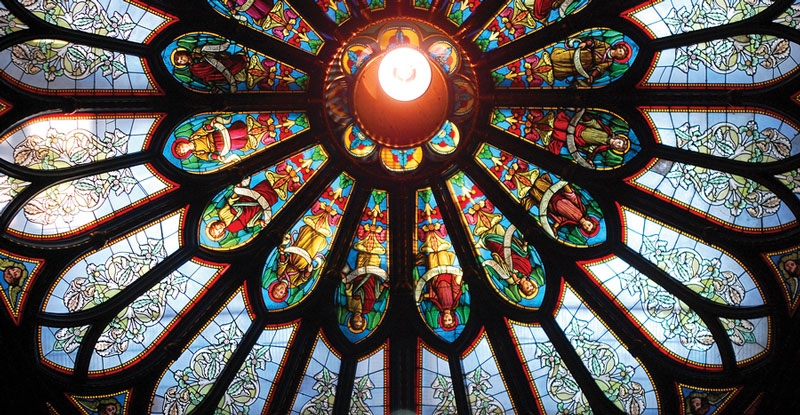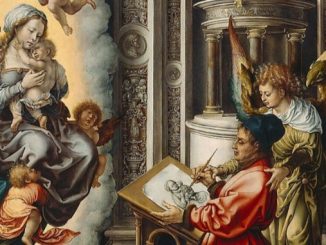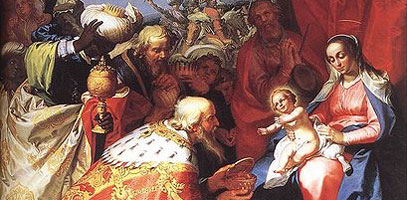
Around the corner from our Bluffton convent is a house which never decorates. The lawn is trim, the trees are pruned, and the shrubs are neatly cared for. But the porch displays no hanging plants flush with color, and when holidays and holy days arrive, no wreaths or decorations appear. The owner is a youth minister at a fundamentalist church, and it appears that his preferences are Puritan.
Perhaps he is protesting the excesses of American culture. It is obvious that our neighborhood looks decidedly secular. The inflatables which puff every Thanksgiving, Christmas, and Easter are turkeys, Grinches, snowmen, Santas, and bunnies. We sisters are the oddballs who hang a lawn flag in November which talks about giving thanks to God. In December, we light up a Nativity. We put it out early in Advent — not to ignore liturgical correctness but to make a silent statement against the neighborhood’s paganizing of the so-called holiday season. In Holy Week, we put out a stark cross flag, and on Easter and the following weeks, one that declares “He Is Risen.”
Unlike that family which shuns decorations, we sisters like color — flowers, wreaths, art objects. We have crosses, crucifixes, statues, images of the Blessed Mother, Biblical scenes, and icons in our house. We display appropriate liturgical colors in our convent chapel. Catholics are not Puritans.
One of the hallmarks of our faith is appreciation of the way in which the sensory can serve and complement the spiritual. Anyone who has visited the plantation communities, textile and paper mill towns, and cities built by Catholics must note the splendor of the churches. While the faithful were struggling to feed their families and furnish their homes, they steadfastly believed that their houses of worship should be places of beauty. Gold trim, mosaics, marble altars, precious chalices, ciboria, monstrances and tabernacles, sweet incense, statuary, brocade and fine embroidery on altar linens and vestments were (and still are) the order of the day. These things, however worldly they might seem, are designed to express the glory of God and to inspire adoration. The Holy of Holies gets the royal treatment.
Catholics employ earthly things for worship and catechesis. Stained glass windows, statues, Stations of the Cross, and rosaries invite prayer but also have long been used to teach the faith — even to impoverished pre-literate peoples. Some years back my brother visited Peru. He brought back a framed photograph of a lovely bamboo structure topped with a cross. The entryway was marked with a sign: Iglesia Catolica. I just know that the interior was lush with color.
We have good reason to be lavish and ornate in our celebrations and sacred spaces. It has been an honored tradition since the era of Moses. Just see Exodus, chapters 25-31, with its prescriptions for adorning the Ark of the Covenant and the meeting tent. We also have an ancient example of bringing holy décor home. Menorahs will soon appear in some families’ windows. Advent, Hanukkah, and Christmas recall divine extravagance. And so we decorate.
Sister Pamela Smith, SSCM, is the Secretary for Education and Faith Formation at the Diocese of Charleston. Email her at psmith@catholic-doc.org.




